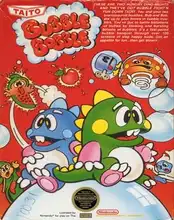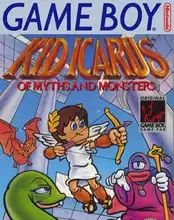Remember the thrill? The perfectly timed jump over a bottomless pit, the satisfying bounce off an enemy's head, the sheer relief of grabbing that power-up just in time? For many of us, our earliest gaming memories are tied to platform games. This genre, built on the simple yet infinitely challenging act of navigating environments by jumping and climbing, defined eras of gaming and continues to hold a special place in our hearts.
But what is it about these classic platformers that keeps us coming back, even decades later? Is it the vibrant pixel art, the catchy chiptunes, or the pure, unadulterated gameplay loop? Let's take a leap back in time and explore.
What Makes a Platform Game Tick?
At its core, a platform game is about movement and spatial awareness. You control a character who must traverse levels filled with obstacles, gaps, and enemies, primarily by jumping between platforms. Simple, right? Well, the magic is in the execution.
Key elements that define the genre include:
- Precise Movement: The feel of controlling your character's jump arc, speed, and momentum is paramount.
- Clever Level Design: Stages are puzzles in themselves, requiring timing, exploration, and sometimes backtracking.
- Varied Obstacles: From moving platforms and crumbling blocks to spikes and environmental hazards.
- Enemies: Often patterns to learn, requiring evasion or specific defeat methods (like that classic head stomp!).
- Collectibles & Power-Ups: Giving you new abilities, health, points, or just that satisfying "ding!" sound.
This formula, simple as it sounds, provides a foundation for incredible creativity and challenge.
A Trip Down Memory Lane: The Golden Age
While platform games exist across all eras, the 8-bit and 16-bit generations are often considered the genre's golden age. Consoles like the NES, Super NES, Sega Genesis, and even early PC platforms running under DOS were playgrounds for developers pushing the boundaries of what could be done with pixels and precise control.
Think about it:
- The sheer scale and secrets of the Mushroom Kingdom.
- The gothic corridors and whip-cracking action of Castlevania.
- The robotic precision and weapon-swapping of Mega Man.
- The fast-paced, loop-de-loop energy of a certain blue hedgehog.
These weren't just games; they were cultural phenomena that shaped the expectations of a generation of gamers. They established tropes, perfected mechanics, and proved that simple concepts could lead to deep, rewarding experiences.
Timeless Jumps: Classic Platform Games Worth Replaying
While a comprehensive list would take ages (some folks have even ranked the top 50!), focusing on a few examples highlights the genre's diversity and enduring appeal.
- Mega Man Series (NES/SNES): Known for its challenging boss rush structure and the unique ability to gain powers from defeated Robot Masters. The tight controls and iconic music are unforgettable.
- Castlevania Series (NES/SNES/Genesis): Blending platforming with action-adventure elements, these games are famous for their atmospheric horror themes, challenging combat, and satisfying whip mechanics. Castlevania: Bloodlines on the Genesis is a standout example.
- Klonoa: Door to Phantomile (PS1): A beautiful 2.5D example from a slightly later era, showing how the genre evolved. It's known for its emotional story and unique "grab and throw" mechanic. Accessible today via remasters!
- Commander Keen Series (DOS): A quintessential PC platformer from the early 90s. Featuring smooth scrolling (a big deal at the time!), pogo sticks, and charming alien worlds, Keen brought the console platforming feel to home computers. You can often find these gems on GOG or playable via DOSBox emulation.
These are just a tiny fraction, of course. Countless other gems like Adventure Island, Gex, Little Samson, and Dynamite Headdy showcase the incredible variety and creativity within the genre.
Why Do We Still Love Them?
Beyond the rose-tinted glasses of nostalgia, retro platform games offer something fundamentally appealing:
- Pure Gameplay: They strip away complex mechanics and focus on the core loop of movement, timing, and reaction. It's easy to understand, difficult to master.
- Rewarding Challenge: Overcoming a difficult jump sequence or defeating a tough boss through learned patterns feels incredibly satisfying.
- Accessible Yet Deep: Anyone can pick up and understand how to jump, but mastering a game requires dedication and skill.
- Art & Sound: The constraints of older hardware often led to incredibly creative and memorable pixel art, animations, and chiptune soundtracks that are instantly recognizable.
They represent a time when game design was perhaps more focused on perfecting a core mechanic than layering complexity.
Where to Find Retro Platforming Fun Today
The good news is, revisiting these classics is easier than ever:
- GOG.com (Good Old Games): A fantastic source for classic PC titles, often pre-configured to run on modern systems via DOSBox or other wrappers. Look for titles like Commander Keen or later PC platformers.
- Steam: While primarily modern, Steam hosts many retro collections, remasters, and indie games heavily inspired by classic platformers.
- Emulation: For console classics, emulators allow you to play games on your PC. Remember to use ROMs only for games you legally own. Projects like Archive.org also host many freely playable classic DOS games directly in your browser, including some platformers.
- Retro Consoles & Collections: Many official mini-consoles and game collections are released for modern systems, bundling classic titles legally.
So, whether you dust off an old cartridge, fire up an emulator, or grab a digital copy, the world of retro platform games is waiting for you to take the leap.
FAQ
Q: What's the difference between a 2D and 3D platformer? A: 2D platformers, like most retro classics, restrict movement to two axes (left/right, up/down). 3D platformers allow movement in three dimensions, adding depth and often more complex camera control.
Q: Are modern indie platformers similar to retro ones? A: Absolutely! Many modern indie games are direct homages to the retro era, mimicking pixel art, chiptune music, and challenging 2D gameplay (e.g., Celeste, Shovel Knight).
Q: Where can I play classic PC platformers like Commander Keen? A: GOG.com is a great source for legal, easy-to-run versions. Archive.org also hosts many DOS games playable directly in your browser.
Q: Why are some retro platformers considered very difficult? A: Older games often had steeper difficulty curves, limited saves (or none!), and relied on pattern memorization and precise execution. It was part of the challenge and the design philosophy of the time.
What are your favorite retro platform games? The ones that tested your patience but rewarded you with immense satisfaction? Share them in the comments below!



